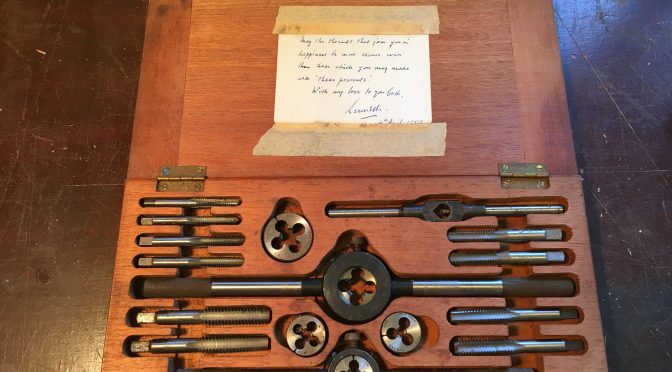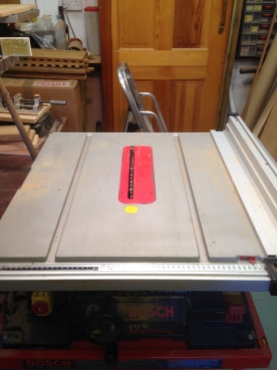With some offcuts of Ash from the paddle project I thought I’d tackle making handle pads for the Laurent Giles levers. The old ones were long past saving and it seemed like a nice project for a rainy Sunday.
Flamingo has running backstays rather than fixed. The backstays are the galvanised steel cables that provide tension in the rig and some support for the mast. This means that each time you tack or gybe you need to slacken off one side (leeward or down wind) and tension up the other side (windward or up wind) to counter the force of the wind and keep the jib or foresail under the correct tension.
You can see in the photo below, the galvanised steel cable with the eye hooked on to the lever, with the lever handle pointing forward (to the right in the photo) and flat on the deck it will be slack but if you swing it through 180° to the left it tightens up.

First I cut out the rough shape with a jigsaw then sanded with drum and disc sander til I was happy with the fit. Then I ripped the block in half on the circular saw to create the two cheeks or pads. Sticking them together with double sided tape I then marked out for the first stage of shaping. Keeping crisp easily visible lines at this stage really helps get the form nice and even later on so with a drum sander in the lathe I put a chamfer all round.




After chamfering its freehand sculpting on the drum sander to get a nice soft form, with smooth transition between the flats where the rivets will go and the profile of the bronze handle.




I used some copper pop rivets to make sleeves and bronze rod to connect them. Needless to say the rods and the rivets didn’t quite match in size so a little dexterity with pliers and pillar drill was needed to drill out the copper. Once that was done it was simply a case of assembling everything on the handle and then peening over the ends of the bronze rod to clench the copper rivets tightly.

I’m quite please with the result, it needs a good soak in linseed oil and turps to protect it but the pair of levers look much better now.

All done and ready to fit back on the deck once I complete a couple of other tasks (finish building an extension, fit a bathroom, replace a flat roof, fit a kitchen, install a home office, install some skylights……🧐 )











































































































 As soon as I wrote, toing and froing I thought that can’t be right, so I googled and found this on the Macmillan dictionary website.
As soon as I wrote, toing and froing I thought that can’t be right, so I googled and found this on the Macmillan dictionary website.






















































































































































